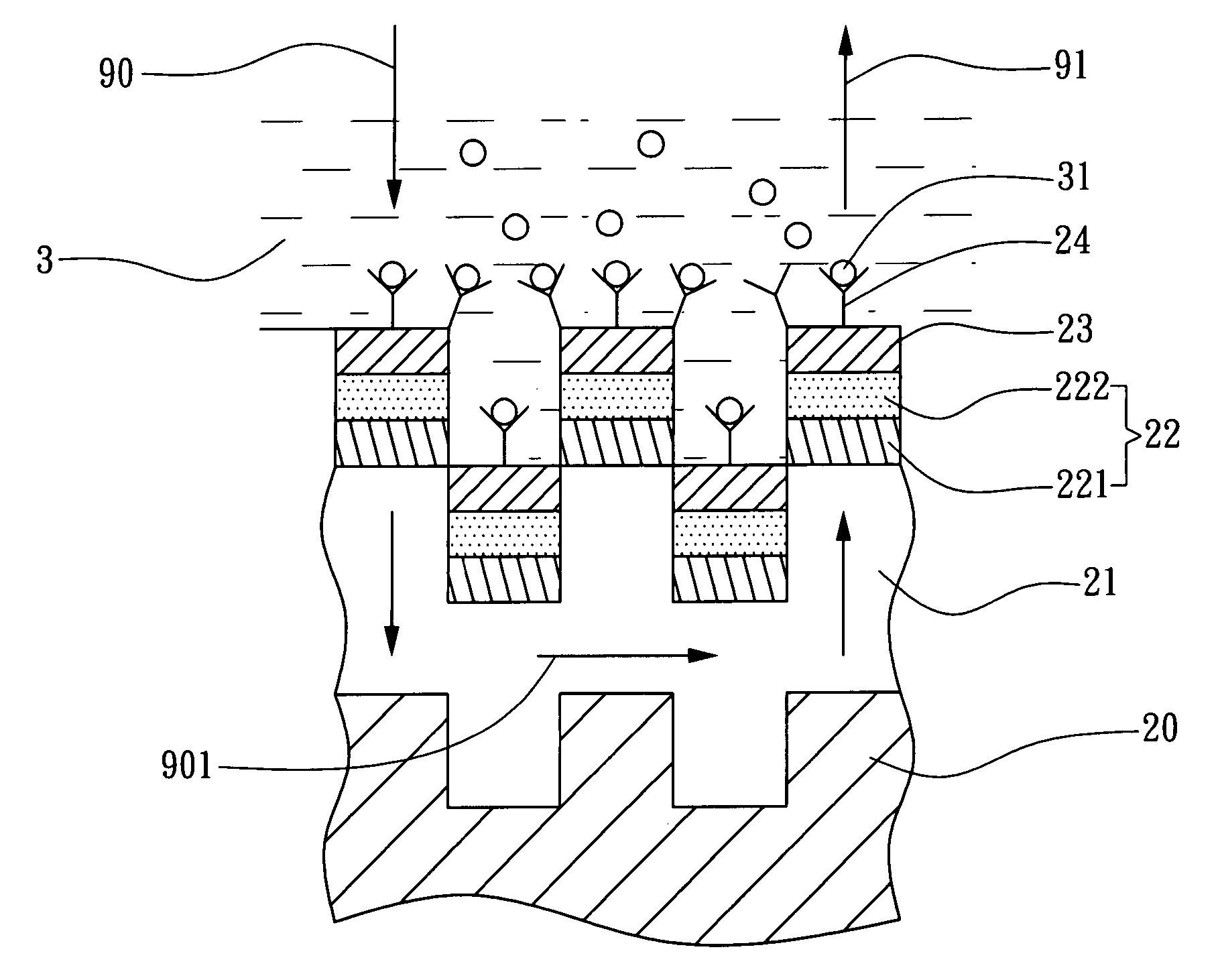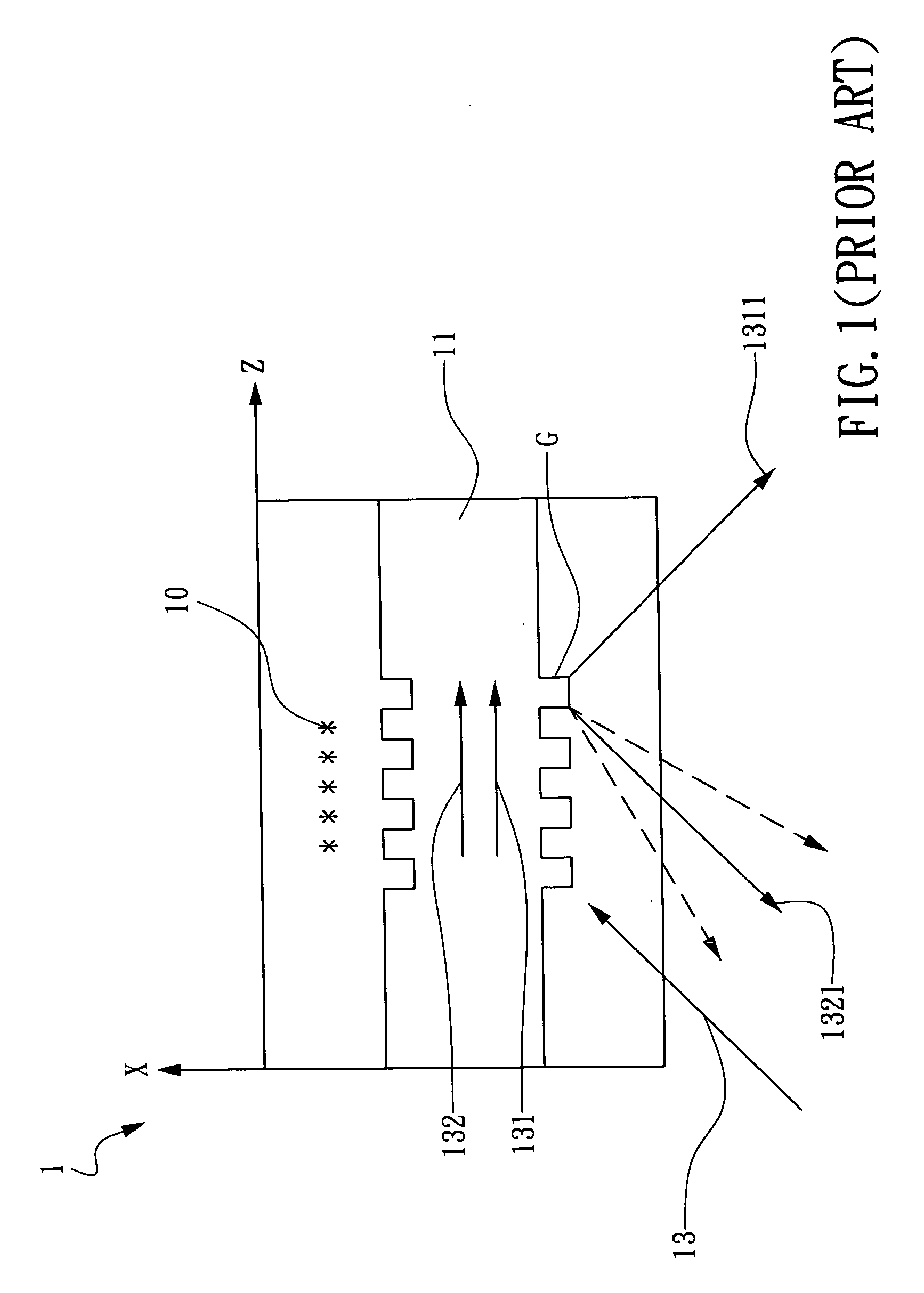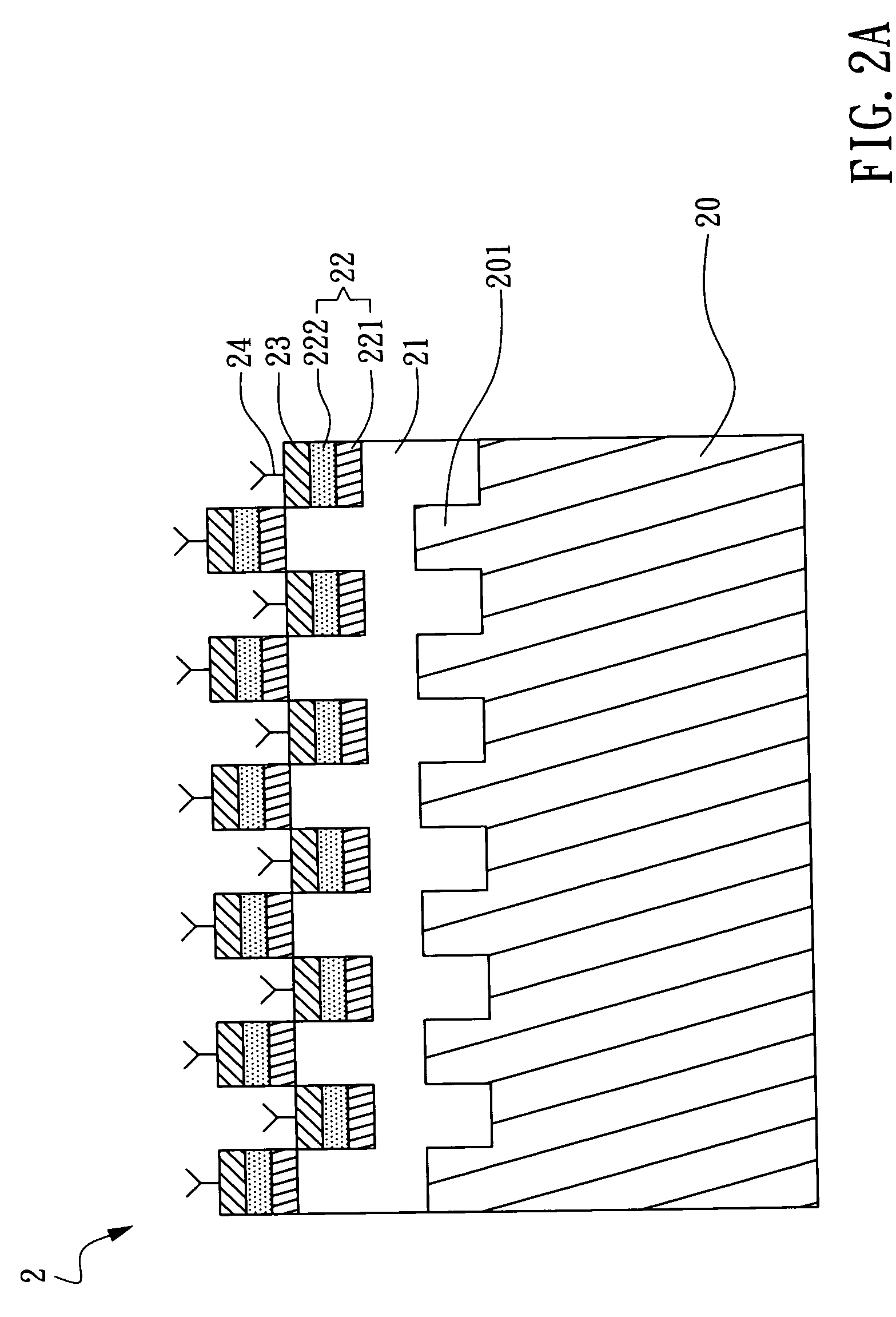Coupled waveguide-surface plasmon resonance biosensor
a plasmon resonance and coupled waveguide technology, applied in the field of biosensors, can solve the problems of inability to obtain dynamics information of real-time interaction, inability to detect plasmon resonance, etc., and achieve the effect of improving resolution and enhancing sensitivity
- Summary
- Abstract
- Description
- Claims
- Application Information
AI Technical Summary
Benefits of technology
Problems solved by technology
Method used
Image
Examples
Embodiment Construction
[0038] The present invention providing a coupled waveguide-surface plasmon resonance biosensor can be exemplified by the preferred embodiments as described hereinafter.
[0039] Coupled waveguide-surface plasmon resonance indicates that surface plasma are excited only at a small range of wavelength or by monochromatic light at a specific incident angles. The wavelength and the angle are referred to as the coupled waveguide-surface plasmon resonance wavelength and the coupled waveguide-surface plasmon resonance angle, respectively. When the coupled waveguide-surface plasmon resonance structure is disturbed by, for example, the minimal change of reflection index or thickness caused by bio-molecular absorption on the surface, the wave vector of the coupled surface plasma changes to cause variation of the resonance wavelength or the resonance angle. Therefore, bio-molecular interaction can be detected dynamically without labeling. Such a coupled waveguide-surface plasmon resonance structu...
PUM
| Property | Measurement | Unit |
|---|---|---|
| thickness | aaaaa | aaaaa |
| diameter | aaaaa | aaaaa |
| line-width | aaaaa | aaaaa |
Abstract
Description
Claims
Application Information
 Login to View More
Login to View More - R&D
- Intellectual Property
- Life Sciences
- Materials
- Tech Scout
- Unparalleled Data Quality
- Higher Quality Content
- 60% Fewer Hallucinations
Browse by: Latest US Patents, China's latest patents, Technical Efficacy Thesaurus, Application Domain, Technology Topic, Popular Technical Reports.
© 2025 PatSnap. All rights reserved.Legal|Privacy policy|Modern Slavery Act Transparency Statement|Sitemap|About US| Contact US: help@patsnap.com



